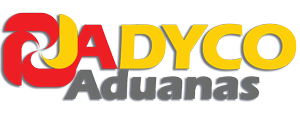The role of new technologies in customs management
The role of new technologies in customs management
Blockchain, Machine learning, iot… these are all advanced technologies that are gradually being integrated into cross-border trade operations. we analyze their rise and implementation and how they are transforming the future of customs.
The emergence of new technologies is transforming industries and the economy as a whole. Despite the reluctance they may provoke and the uneven degree of their implementation, these technologies are here to stay and are gradually being incorporated into all economic activities, including the supply chain and, of course, customs.
We are talking about: Blockchain, Internet of Things (IoT), Big Data, Artificial Intelligence (AI), and Machine Learning (ML).
Both the World Customs Organization (WCO) and the World Trade Organization (WTO) oversee and promote their development to boost international trade. However, their implementation on a global scale is not an easy task.
What is the real potential of these technologies? How are they currently being used in the sector? What are the challenges to their development?
Blockchain for operational security
WHAT IS IT?
It is an information storage system based on the collection of metadata and locators.
Unlike traditional databases, where information is centralized in a single unit for general storage, blockchain relies on a distributed storage network where data is stored in interrelated blocks hosted on different servers. The advantage is that these servers interact on an equal footing without any single unit controlling the process, using an encryption system that ensures the information cannot be altered. This guarantees maximum data quality.
Therefore, blockchain is not only a data storage system but also a highly valuable tool for securely sharing information, as the data is immutable.
EL BLOCKCHAIN IN THE CUSTOMS ENVIRONMENT
Applied to customs, blockchain consists of a digital record of transactions with timestamps, where data from each operation is stored securely and immutably using various cryptographic techniques.
Due to its security and data reliability, this technology is highly useful in various areas, such as:
• Enhancing interconnection between single windows.
• Validating certificates of origin, quality, sustainability, etc.
• Exchanging and verifying information about operators involved in each operation: AEOs, importers, carriers, etc.
• Accessing information for tracking goods along the supply chain.
Blockchain offers multiple benefits in any domain where information exchange is of vital importance, such as customs. Some of the key advantages include:
• Transparency and accessibility to information from different sources in real-time.
• High-quality and reliable data.
• Lower costs and reduced time for verifying information related to each operation and operator.
• Increased privacy and data confidentiality.
• Process automation.
The application of blockchain improves efficiency and guarantees in areas such as risk management, tariff and tax collection, and customs debt calculation.
CHALLENGES TO IMPLEMENTING THIS TECHNOLOGY
Despite its benefits and potential, many obstacles hinder full implementation, making its use still relatively limited. Few countries have fully integrated this technology into their customs operations, among them Brazil, Uruguay, Paraguay, Argentina and, more recently, Dubai Customs.
The main obstacle to its development is the standardization of stored data sets. For blockchain technology to be useful internationally, data must share a common standard. Currently, this is not the case, which not only complicates information exchange but also prevents the establishment of common platforms for sharing data that can interact with one another.
These issues are slowing blockchain adoption, as its development entails high costs, and its future utility remains uncertain as long as there is no shared standard among all operators.
Despite these difficulties, blockchain is slowly being implemented. In the EU, for example, it is already being used for VAT calculation and collection, geographical indication protection, and certification of goods’ origin.
The use of new technologies in the customs field will streamline customs clearance and improve operational security
The use of new technologies in the customs field will streamline customs clearance and improve operational security
IoT for process automation
WHAT IS IT?
IoT refers to various objects, devices, or “things” equipped with sensors, software, and other technologies that can transmit and receive data through wireless networks. Their purpose is to inform users or automate actions and processes.
In logistics, IoT consists of a network of sensors and devices connected to the internet with the ability to send and receive information. These gadgets enable shipment tracking along the supply chain, increasing transportation efficiency and security while reducing costs.
IoT IN THE CUSTOMS ENVIRONMENT
IoT systems are helping automate customs procedures at border crossings. The introduction of these smart devices is enhancing efficiency in customs processes and improving data analysis. These tools offer better traceability and visibility of shipments in real-time, facilitating customs monitoring and supervision.
Many IoT devices are already being used in customs, including commonly found tools such as X-ray scanners, computed tomography machines, QR and barcode readers, license plate readers…
The information obtained through these devices is improving customs clearance efficiency and enhancing risk management in shipments. Additionally, it reduces manual procedures, increasing security and facilitating legitimate trade.
CHALLENGES TO IMPLEMENTING THIS TECHNOLOGY
Despite its advantages and relatively widespread use, several obstacles hinder its full implementation.
First, there are issues related to device compatibility and interoperability. The diversity of IoT solutions currently available creates problems with data compatibility, making it difficult for systems to interact efficiently.
Another major obstacle is the lack of information sharing. The issue is that collected data is not extensively shared with other operators. Most government agencies share data with other customs authorities or governmental bodies but do so less frequently with private sector agents.
Security and privacy of collected and shared data are also concerns. While some countries have more relaxed regulations regarding data-sharing, Europe has strict legislation ensuring data privacy.
Despite these challenges, the introduction of IoT in the customs environment has proven beneficial, and this technology is expected to prevail. In Europe, its use is widespread and almost fully integrated with automated customs clearance systems, including CCTV cameras, X-ray scanners, GPS systems, and license plate readers.
Big Data, IA and Machine Learning for mass data processing
WHAT IS IT?
These are a set of different technologies based on analyzing and processing large amounts of information at high speed.
Big Data systems enable working with vast amounts of data at high speed, yielding interpreted and structured results.
Artificial Intelligence is a relatively new concept with no universally accepted definition. The European Commission describes it as “a field of computing focused on creating systems that can perform tasks that normally require human intelligence. These systems can perceive their environment, reason about knowledge, process data-derived information, and make decisions to achieve a given goal.”
Machine Learning is a subfield of AI that, through algorithms, enables computers to identify patterns and make predictions. This learning allows computers to perform specific tasks autonomously without needing explicit programming.
BIG DATA, AI Y ML IN THE CUSTOMS ENVIRONMENT
The combination of these three technologies in customs is still relatively new and not widely adopted, but it could provide numerous advantages, including:
• Improved customs risk management by generating operator profiles and identifying risk patterns, leading to more effective fraud detection.
• Enhanced valuation analysis of shipments, improving tax and duty collection.
• Facilitated customs audits and anomaly detection.
• Development of chatbots to address inquiries or respond to online queries, streamlining customs procedures.
CHALLENGES TO IMPLEMENTING THIS TECHNOLOGY
Numerous obstacles hinder the implementation of these technologies, starting with their novelty. They are still evolving and require significant financial investment.
The shortage of qualified professionals and the lack of standardized data treatment methods are additional challenges. Moreover, no governmental or relevant authority strategy has been established for their implementation.
Integrating customs transaction data from multiple sources into a single platform for global analysis requires substantial changes to existing IT systems. Hence, dependency on legacy systems remains high.
Finally, data confidentiality and protection laws slow the adoption of these technologies for customs purposes. Most customs-related datasets contain personal data, making them subject to strict regulations like the EU’s GDPR, which restricts their use. Combining data processing with privacy laws remains a significant challenge to overcome.
ARTÍCULOS RELACIONADOS
EU DATA HUB: EL FUTURO CENTRO ADUANERO DE DATOS DE LA UE
ADUANAS | LEGISLACIÓN
El Centro Aduanero de Datos de la UE registrará y validará a nivel global todos los procesos aduaneros y de comercio internacional de la Unión Europea.
SIMPLE: UNA PLATAFORMA PARA LA DIGITALIZACIÓN DE LA LOGÍSTICA
SUPPLY CHAIN | LOGÍSTICA | TECNOLOGÍA
2024 será el año en el que finalmente el proyecto ‘SIMPLE’ verá la luz. Una plataforma digital con la que el Ministerio de Transportes pretende situar a España a la cabeza de los países europeos en el uso de la tecnología al servicio del sector logístico…


